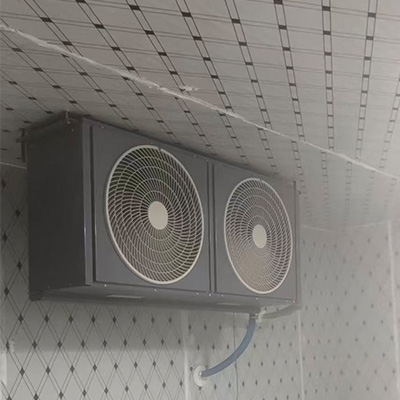The selection advantages of mobile cold storage units are concentrated in four core dimensions: flexibility, low cost, easy deployment, and scene adaptability. They can solve the pain points of traditional fixed cold storages such as "difficult site selection, expensive renovation, and scene limitations", as follows:
First of all, it is flexible in deployment, breaking through spatial limitations. Traditional cold storage facilities require fixed sites and complex civil construction. Mobile units can rely on containers, carriages and other carriers, and can be installed and debugged within 3 to 5 days without damaging the original site structure. For instance, when fresh food e-commerce companies temporarily expand their storage capacity or pre-cool agricultural products in remote areas, mobile units can be directly transported to the site, avoiding the 3-6 month cycle of "site approval + infrastructure construction" and enabling a rapid response to demands.
Secondly, the cost is controllable and the investment threshold is lowered. The mobile unit does not require fixed costs such as civil construction and insulation layer renovation. The procurement cost of a single 10-20 cubic meter device is 40% to 50% lower than that of a fixed cold storage of the same specification. Moreover, it can be leased as needed (monthly rent of 2,000 to 5,000 yuan), making it suitable for small and medium-sized merchants or short-term projects (such as food refrigeration at exhibitions, seasonal fruit and vegetable storage), avoiding "long-term idle waste".
Furthermore, it has a wide range of scene adaptability and can meet diverse needs. Whether it is the "vehicle-machine integrated" refrigeration in cold chain transportation (such as the mobile unit equipped on long-distance cold chain vehicles to ensure the continuity of transportation and storage temperatures), or emergency scenarios (such as temporary vaccine storage during the epidemic and food preservation after disasters), the mobile unit can adapt to different goods by adjusting the temperature range (-25℃ to 5℃). Moreover, some models support dual power supply from the mains and generators, making them suitable for use in remote areas.
Finally, it is convenient for operation and maintenance, reducing management pressure. The mobile unit has a compact structure and an integrated design of core components. Its daily cleaning and troubleshooting are more efficient than those of scattered fixed cold storage facilities. Some models are equipped with remote monitoring functions, allowing real-time viewing of temperature, humidity and the status of the unit. There is no need for dedicated personnel to stand by on-site, and the operation and maintenance costs are 20% to 30% lower than those of fixed cold storage.


